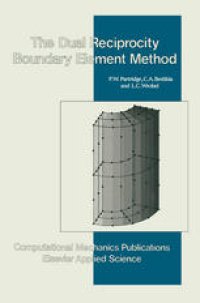
Ebook: The Dual Reciprocity Boundary Element Method
- Tags: Mechanical Engineering
- Series: International Series on Computational Engineering
- Year: 1991
- Publisher: Springer Netherlands
- Edition: 1
- Language: English
- pdf
The boundary element method (BEM) is now a well-established numerical technique which provides an efficient alternative to the prevailing finite difference and finite element methods for the solution of a wide range of engineering problems. The main advantage of the BEM is its unique ability to provide a complete problem solution in terms of boundary values only, with substantial savings in computer time and data preparation effort. An initial restriction of the BEM was that the fundamental solution to the original partial differential equation was required in order to obtain an equivalent boundary in tegral equation. Another was that non-homogeneous terms accounting for effects such as distributed loads were included in the formulation by means of domain integrals, thus making the technique lose the attraction of its "boundary-only" character. Many different approaches have been developed to overcome these problems. It is our opinion that the most successful so far is the dual reciprocity method (DRM), which is the subject matter of this book. The basic idea behind this approach is to employ a fundamental solution corresponding to a simpler equation and to treat the remaining terms, as well as other non-homogeneous terms in the original equation, through a procedure which involves a series expansion using global approximating functions and the application of reciprocity principles.
Content:
Front Matter....Pages i-xvi
Introduction....Pages 1-10
The Boundary Element Method for the Equations ∇2 u = 0 and ∇2 u = b....Pages 11-68
The Dual Reciprocity Method for Equations of the Type ∇2 u = b(x,y)....Pages 69-108
The Dual Reciprocity Method for Equations of the Type ∇2 u = b(x,y,u)....Pages 109-173
The Dual Reciprocity Method for Equations of the Type ∇2 u = b(x,y,u,t)....Pages 175-222
Other Fundamental Solutions....Pages 223-265
Conclusions....Pages 267-268
Back Matter....Pages 269-284